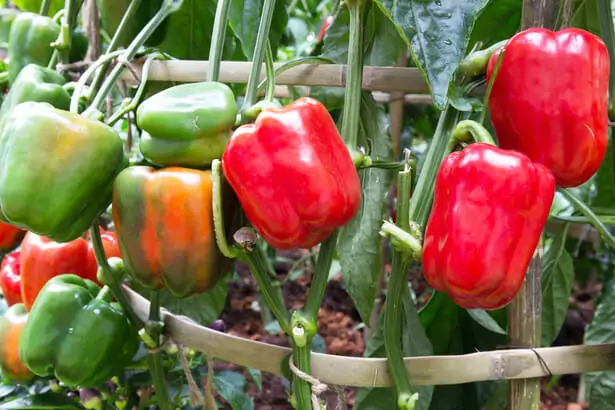
Growing peppers can indeed result in a rich and abundant harvest if you follow some key practices. Here’s a method that can help you achieve success:
- Selecting the Right Variety: Choose pepper varieties that are well-suited to your climate and growing conditions. Whether you prefer sweet bell peppers or hot chili peppers, make sure to select varieties that thrive in your region.
- Starting Seeds Indoors: Begin your pepper plants indoors several weeks before the last frost date in your area. Use seed starting trays or pots filled with a high-quality seed starting mix. Plant the seeds about ¼ inch deep and keep the soil consistently moist. Provide warmth and ample light, either from a sunny window or grow lights.
- Transplanting: Once the seedlings have developed several sets of true leaves and the weather has warmed up, transplant them into larger containers or directly into the garden bed. Choose a sunny location with well-draining soil. Space pepper plants about 18-24 inches apart to allow for adequate airflow and room for growth.
- Soil Preparation: Prepare the soil by amending it with compost or well-rotted manure to improve fertility and drainage. Peppers prefer slightly acidic soil with a pH of 6.0-6.8. You can test your soil’s pH using a soil test kit and adjust it as needed.
- Watering: Water your pepper plants consistently, keeping the soil evenly moist but not waterlogged. Avoid overhead watering, as wet foliage can promote disease. Instead, water at the base of the plants to prevent water from splashing onto the leaves.
- Fertilization: Peppers are heavy feeders and benefit from regular fertilization throughout the growing season. Apply a balanced fertilizer or a fertilizer specifically formulated for vegetables according to package instructions. You can also side-dress with compost or organic matter periodically to provide additional nutrients.
- Mulching: Mulch around the base of your pepper plants with organic mulch, such as straw or shredded leaves. Mulching helps conserve soil moisture, suppresses weeds, and maintains more consistent soil temperatures.
- Support and Pruning: Depending on the variety, some pepper plants may benefit from staking or support cages to keep them upright as they grow and produce fruit. Additionally, pinch off any suckers that form in the leaf axils to encourage larger fruit production.
- Pest and Disease Management: Monitor your pepper plants regularly for signs of pests or disease, such as aphids, caterpillars, or fungal infections. Use organic pest control methods, such as handpicking pests or applying neem oil, to manage infestations. Proper spacing, good airflow, and mulching can also help prevent disease.
- Harvesting: Harvest your peppers when they reach the desired size and color. Most peppers can be harvested green or left on the plant to ripen to their final color, whether it’s red, orange, yellow, or another hue. Use scissors or pruning shears to cut the peppers from the plant to avoid damaging the stems.
By following these steps and providing your pepper plants with the care they need, you can enjoy a bountiful harvest of fresh, flavorful peppers throughout the growing season.
